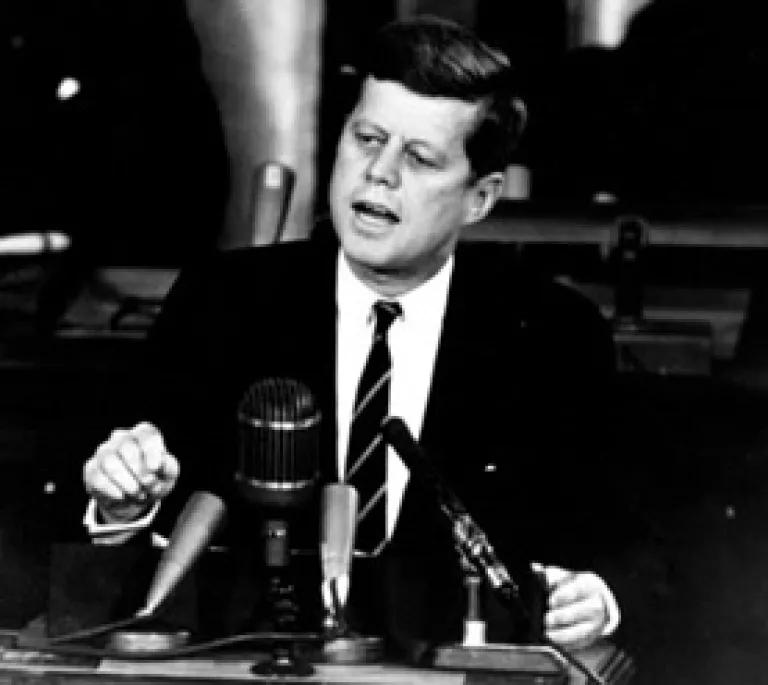Granting Big Oil a Free Pass Under California's Clean Energy Law Would Be a Giant Leap Backward
In their latest video ad, the California Drivers Alliance, an oil-backed front group organized to lobby against California’s clean fuel standards, claims fuel providers “need more time” to prepare for the January 1st inclusion of gasoline under California’s economy-wide program to cap and steadily reduce climate pollution. Some California legislators agree, backing bills that would grant the oil industry a three-year delay or outright exemption.
Far From a Moonshot
But the notion that the oil industry needs more time to “plan for this” is hard to take seriously. The oil industry has had as much time as it took to land a man on the moon to prepare for being held to the same standard as California’s other major emitters (which are already covered under the program). If we can go to the moon and back in eight years, surely the oil industry – the most profitable industry on earth – can figure out how to play by the same rules as everyone else.

In a speech at Rice University on May 25, 1961, President Kennedy promises to put a man on the moon by the end of the decade. Eight years later, on July 20, 1969, Neil Armstrong and the Apollo 11 crew fulfill Kennedy’s pledge.
A Walk Down AB 32 Memory Lane
Let’s refresh the facts.
- September 2006: Governor Arnold Schwarzenegger signs the Global Warming Solutions Act, AB 32, into law, committing California to reduce statewide carbon emissions to 1990 levels by 2020. As the largest source of emissions in the state – at nearly 40 percent – fuel providers recognize they must take steps to reduce their footprint, and voice support for market-based approaches like cap-and-trade as the most cost-effective means of complying with AB 32.
- June 2007: The Market Advisory Committee, a panel of experts convened to advise California’s Air Resources Board (ARB) on developing a cap-and-trade program under AB 32, recommends including fuels within the scope of the program to “create more emissions-reduction opportunities and thereby lower the costs of meeting a given emissions cap.” Cap-and-trade programs put a limit on the total emissions of sources under the cap, but enable those sources to trade a shrinking pool of permits (known as allowances) to match every ton of pollution they emit.
- September 2008: California, as a member of the Western Climate Initiative, endorses consensus cap-and-trade design recommendations that include fuels under the cap, noting: “Recognizing that transportation fuels are the largest source of GHG emissions in the region…transportation fuels must be included in order to achieve the objective of reducing emissions not only by 2020, but by 2050…and to ensure a level playing field across all fuels.”
- December 2008: ARB adopts the first AB 32 Scoping Plan, which includes an economy-wide cap-and-trade program as the backbone of California’s comprehensive blueprint to comply with AB 32, and recommends a phased-in compliance schedule that includes the fuels sector beginning on January 1, 2015.
- November 2010: California voters resoundingly defeat an oil industry-backed initiative, Proposition 23, which would have suspended AB 32 indefinitely.
- December 2010: ARB formally adopts the cap-and-trade program, which, you guessed it, includes coverage of the fuels sector starting January 1, 2015.
- 2011-2014: ARB implements the cap-and-trade program, including auctioning permits from future compliance years that depend on fuels remaining part of the program. The Legislature passes a series of bills appropriating proceeds from the auctions that assume fuels will remain part of the program. Businesses in California make investments and take steps to reduce emissions in reliance on fuels remaining part of the program.
- Present day: The oil industry launches a public campaign seeking to suspend the “sudden” inclusion of their products under the cap.
Hiding in Plain Sight
The oil industry contends being held accountable for its carbon pollution represents a “hidden” gas tax. If that’s the case, it’s been hiding in plain sight for nearly a decade. The oil industry has been on notice to reduce or pay for its pollution under California’s cap-and-trade program since at least 2006, back when tweeting was the exclusive province of birds and Seattle had a professional basketball team (even time can’t heal some wounds…).
What the oil industry doesn’t want you to know is that AB 32 is diversifying our fuel mix (“Competition for our products? Intolerable!”), reducing consumer fuel costs (“Lower demand? Inconceivable!”) and avoiding billions in health costs (“Pay for our pollution? Balderdash!”). NRDC launched a campaign this week to bring the truth about AB 32 back to earth.
Join us in calling on your elected officials to stand up to Big Oil and protect California’s clean energy future.
